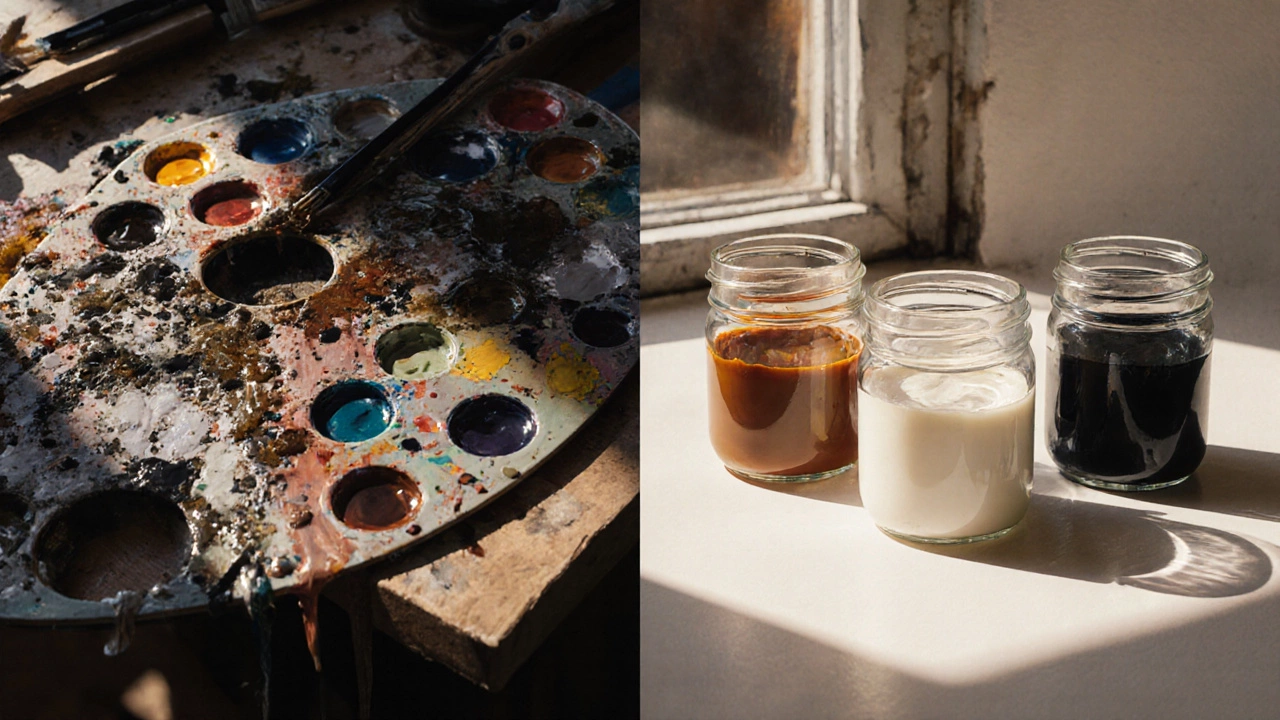Understanding the Three-Bucket Rule in Oil Painting
14 Oct 2025Learn what the three-bucket rule is, how to set it up, and why it improves value control and color consistency in oil painting.
Continue reading...When working with oil painting technique, the collection of methods artists use to apply oil pigments on canvas, wood, or panel. Also known as oil painting methods, it lets creators build depth, richness, and texture in their work. Another key practice is Alla Prima, a wet‑on‑wet approach where you finish a painting in one sitting, and it demands fast decision‑making and fresh paint handling. Landscape painting focuses on outdoor scenes, using light, perspective, and color harmony to capture nature’s mood. Finally, oil painting mistakes cover common errors like muddy colors or cracked layers, and knowing how to fix them keeps a piece looking fresh. Understanding these parts helps you see how the whole process fits together.
Alla Prima encompasses the concept of completing a work while the paint is still wet, which means you need confidence in brushwork and color mixing. The key tools are a sturdy brush, a medium like linseed oil, and a well‑ventilated space. Artists who use this method often finish a piece in a single session, capturing spontaneity and energy. This technique also influences how you plan your composition—because you can’t rely on later corrections, you think ahead about value and contrast.
Landscape painting relies heavily on color palette selection and perspective control. A classic approach uses a warm‑to‑cool gradient to suggest distance, while atmospheric perspective softens details in the background. Choosing the right ground (like cotton canvas primed with gesso) supports the heavy oil layers typical of outdoor scenes. When you get the fundamentals right, the scene feels alive, and viewers can almost hear the wind.
Fixing oil painting mistakes is a skill that saves time and money. Wet‑layer errors can be lifted with a clean rag or a solvent‑based medium, while tacky areas respond well to gentle scrubbing. For dried layers, glazing a thin transparent color can shift tones without removing paint, and careful scraping can expose the underpainting for a fresh start. Knowing these repair methods means you’re never stuck with a bad decision.
Brushwork and layering tie all these elements together. A soft filbert brush is great for blending skies, while a stiff hog brush delivers texture in foliage. The way you build up paint—starting with thin underpainting, then adding thicker glazes—creates depth and prevents cracking. Mastery of brushstroke style also defines an artist’s signature, whether you favor smooth transitions or bold impasto.
The posts you’ll find below dive deeper into each of these areas. You’ll see step‑by‑step guides on the alla prima workflow, detailed rules for landscape composition, practical tips for correcting errors, and advice on choosing the right brushes and mediums. Whether you’re just starting out or looking to refine a specific skill, the collection offers actionable insights you can try right away.
With this foundation, you’re ready to explore the specific articles below and start experimenting with the techniques that suit your style. Happy painting!

Learn what the three-bucket rule is, how to set it up, and why it improves value control and color consistency in oil painting.
Continue reading...